The human foot is a combined structure of base and lever, supporting and balancing the body’s weight while standing, as well as raising and moving the body forward when in motion. Our feet work for us the whole day, whether we stand, play, run, or walk, and in the process they become the most affected part of our anatomy.
Bones
- The foot is composed of 26 skeletal bones held together by muscles, ligaments and tendons.
Muscles
- The foot has 32 muscles and tendons. Muscles of the foot and leg balance the body and control the levers. The muscles in the leg provide power for the foot and those in the foot itself are used mainly for balance and direction.
Tendons
- Tendons are strong inelastic “ropes” which attach the muscles to the bones. They keep the dynamic balance and shape of the foot.
Arch
- An arch is a series of bones forming a rigid, but curved structure held together by ligaments. When pressure or weight is applied to the arch the ends tend to spread apart, but the ligaments, which do not give away under the pressure, hold it firmly in place. The foot has 1 main arch along the inside of the foot and 3 lesser arches: the metatarsal arch across the ball of the foot, the outer long arch down the outside of the foot and a short arch under the rear of the foot.
Ligaments
- The foot has 109 ligaments that serve as hinges to keep the bones and joints together. They are bands of “ropes”. They are fibrous and strong but less elastic than muscles. Ligaments hold the bones together, particularly those of the arch by keeping it in a firm, unyielding curve when weight is placed upon it. They maintain the static form of the foot.
Weight Distribution
- Distribution of weight is concentrated upon six basic points of support provided by the bone framework. The heel bone takes about half the weight. Any abnormalities of the foot structure which upset the normal distribution of weight bearing will cause inconvenience and discomfort.
Toes
- The toes function is to grip, clamping the feet to the walking surface. They give final propulsion as the foot completes a step, shifting weight to the other foot. Although the big toe carries part of the body weight with each step, no weight rests on the big toe as the body stands. The toes’ gripping tendency helps to maintain balance and aid propulsion.
Growth of the Human Foot
The foot of a newborn child has only one bone. The rest of the foot is made up of cartilage. When a child reaches 3 years of age much of the cartilage has become bone and by age 6 all bones have taken shape but are still partly composed of cartilage.
The growth of the human foot comes in spurts. Studies show that during the first ten years of a child’s life the foot grows about one-half inch a year. Between the age of 10 and 20 the yearly growth rate slows down considerably, with maturity of growth arriving between the age of 19 and 20.
Be warned, even at a late stage of development, incorrect posture, poor walking and incorrect shoes can still destroy the joint alignment of the foot structure and the bones themselves.
Algemene voettypen
- Normal/Neutral
- Normal or neutral feet tend to roll off the centre of the forefoot (front part of the foot). Any type of shoe is appropriate except shoes designed specifically for certain foot types or foot disorders.
- High Arched or Rigid
- A high arched or rigid foot has a limited range of motion and doesn’t absorb shock well. As a result they require shoes with maximum cushioning but no motion control properties because the feet need all the mobility they can get.
- Supinated Feet
- Supinated feet roll off the outside of the forefoot. Supinated feet can get by with more forefoot cushioning and flexibility. You need more cushioning if your feet are often sore or have many blisters or calluses on the bottom.
- Pronation
- Pronation is a motion which accentuates the normal action which occurs when the foot rolls from the outside of the heel to the inside, transferring weight forward from heel-strike to push off. There are many things built into a running shoe to decrease the side to side motion, or pronation. For example, a straight last increases heel stability. A substantial arch support prevents the foot from rolling to the inside during push off. In the sole, the firm fit of a heel cup (rigid portion at back of shoe that supports heel) can be constructed so that it absorbs shock.
- Flat Feet
- Runners with flat feet generally ‘overpronate’ (accentuated pronation). They need excellent rearfoot (back of the foot) control. A straight last can offer more support. A firm midsole will help reduce the flat foot’s “natural” tendency to pronate.
Foot measurements
Feet come in every size and shape imaginable. Length and width determine the way a shoe fits a foot: the size of the foot and the shoe must match in order to achieve the best possible results. This is why Bata offers shoes in various lengths and widths. Most people will find a shoe that fits from the standard Bata collection. For those whose feet don’t fit within these series of sizes, we offer customers a special solution: Bata Adapt.
